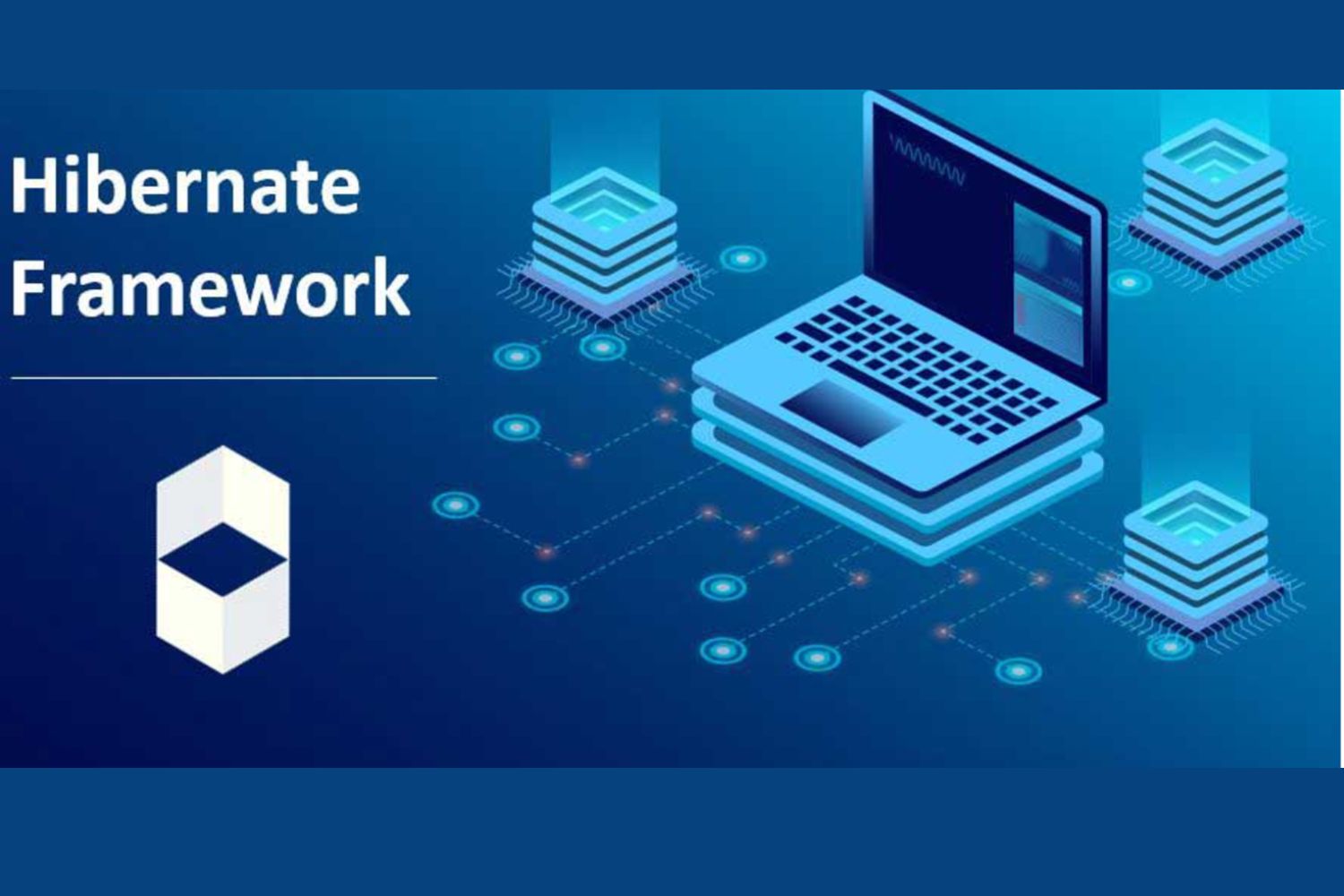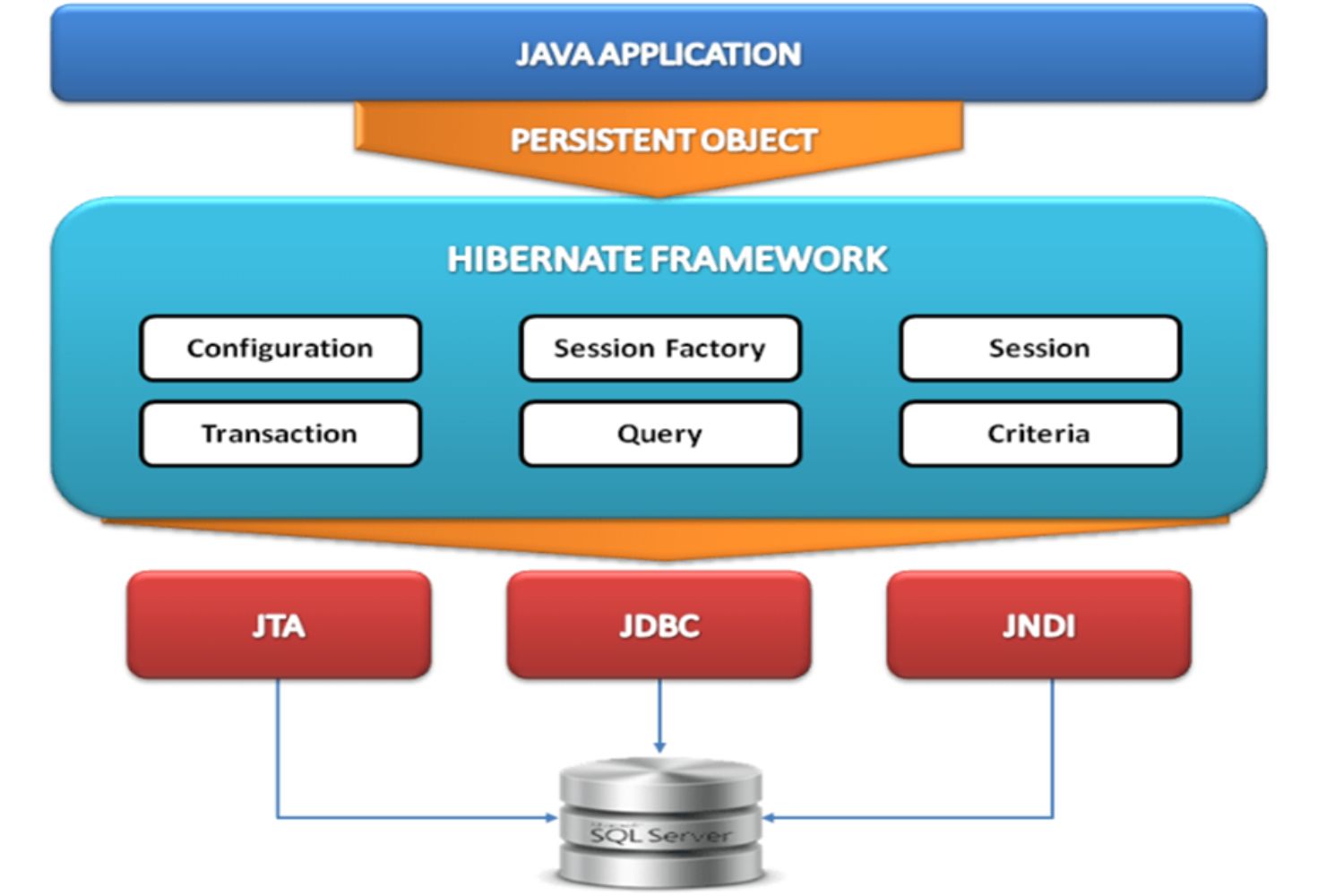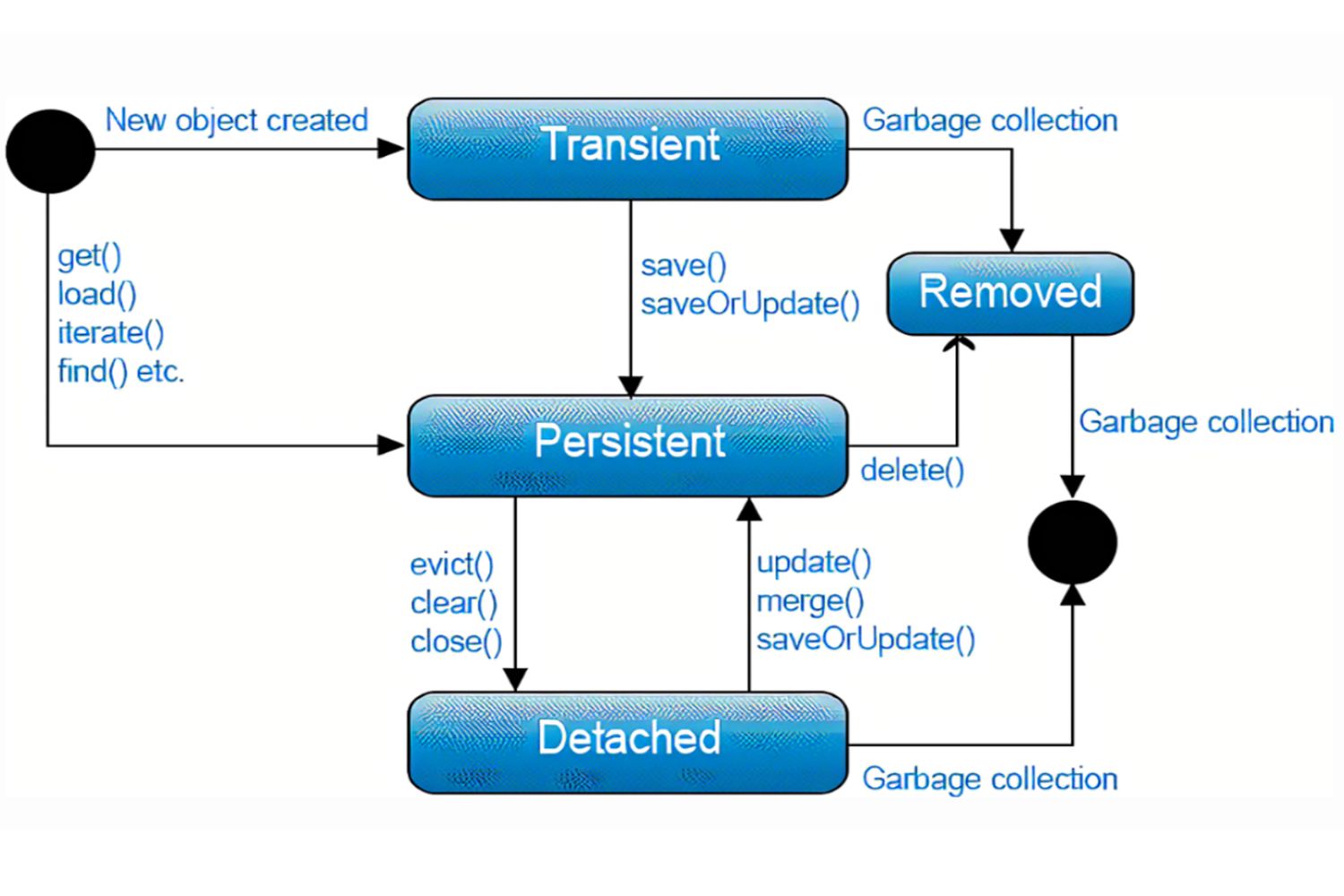
HIBERNATE FRAMEWORK
A Java framework called Hibernate makes it easier to create Java applications that communicate with databases. It’s a lightweight, open-source ORM (Object Relational Mapping) tool. For data persistence, Hibernate implements the JPA (Java Persistence API) requirements.
Hibernate is a framework that offers an abstraction layer. This means that the programmer doesn’t need to bother about implementations because Hibernate takes care of them internally, such as connecting to databases and creating queries to carry out CRUD operations .The framework for Java is used to create persistence logic. To save and process data for future use is to apply persistence logic. To be more specific, Hibernate is an open-source, lightweight, non-invasive Java ORM (Object-relational mapping) framework for creating objects that can be used independently of database software and to create persistence logic that is independent of any Java or JEE application.
FEATURES MADE POSSIBLE BY THE HIBERNATE FRAMEWORK:
Auto DDL operations are supported by the Hibernate framework. The data-type for each and every column must be declared when creating a table by hand in JDBC. However, Hibernate may perform DDL actions on your behalf internally, such as adding, removing, and altering tables . Hibernate facilitates the development of Auto Primary keys. It implies that setting a table’s primary key manually in JDBC is required. But Hibernate can do this job for you. Because it supports HQL (Hibernate Query Language), which is not database-specific, the Hibernate framework is database-independent but JDBC is not . Whereas exception handling is required in JDBC, it is not required in Hibernate . While cache memory is not supported by JDBC, it is by Hibernate . Since Hibernate is an ORM technology, object relational mapping is supported. JDBC, on the other hand, is not object-oriented, and the data we work with is primitive, meaning values. In Hibernate, every record is an object, but in JDBC, every record is just data consisting of primitive values.
COMPONENTS OF HIBERNATE FRAMEWORK
Configuration object: The hibernate configuration file is contained in the configuration object. It mostly contains class mapping (.hbm.xml) and database connection information (hibernate.cfg.xml). The Session Factory object is created using the configuration object.
Session Factory object: The Configuration object is used to build the Session Factory object. All of the application’s threads use this thread-safe object. It serves as the Connection Provider’s client and factory for session objects. It keeps the data’s second-level cache intact.
Session object: The Session Factory object is the source from which the session object is formed. It serves as a factory for queries, criteria, and transactions. It is not thread-safe to use session objects. It keeps up the top-level cache.

Subject of transaction: The Session object is used to build the Transaction object.
Query: Hibernate’s Query component is used to generate objects and retrieve data from databases. A query instance is used to execute the query, bind query parameters, and set a limit on the amount of results it returns.
Criteria: One useful tool for retrieving data from the database using conditions is the Hibernate Criteria API. It offers greater control and flexibility than the HQL query language, yet it is similar.
TYPES OF HIBERNATE FRAMEWORK
With Hibernate, we have the option to either generate an entity object from scratch and put it in the database, or we can retrieve an entity’s pre-existing data from the database. Every object in these entities goes through different stages of the lifetime, and these entities are linked to the lifecycle.
There are mainly four states of the Hibernate Lifecycle
1. Transient State
2. Persistent State
3. Detached State
4. Removed State

1. Transient State:
An entity object’s initial state is called its transitory state. An object of the POJO class is in the transitory state when we instantiate it using the new operator. There isn’t a hibernation session associated with this object. This state is not associated with any database table because it is not related to any Hibernate Sessions. Therefore, if we modify any of the POJO Class’s data, the database table remains unchanged. Transient objects reside in heap memory and are not dependent on Hibernate.
2. Persistent State:
Following its connection to the Hibernate Session, the object enters the Persistent State. The Transient State can be changed into the Persistent State in two ways:
a. The entity object should be saved into the database table using the hibernated session.
b. Fill the database table with the entity object by using the hibernated session.
At this point, every object in the database table corresponds to a single row. Hibernate will therefore recognize any modifications we make to the data and update the database table accordingly.
3. Detached State
Either the session must end or the object’s cache must be cleared in order to change it from persistent to detached state. Any modifications made to the data won’t impact the database table because the session is ended here or the cache is cleaned. The separated object can be rejoined to a fresh hibernation session whenever necessary.
4. Removed State:
It is the final stage of the hibernate lifecycle. As soon as the entity object is removed from the database, it is recognized to be in the removed state. Calling the delete() action completes the process. Since the entity object has been deleted, any changes made to the data won’t have an impact on the database table.
ADVANTAGES OF HIBERNATE FRAMEWORK
1. Lightweight and Open Source :The lightweight Hibernate framework is available as open source software under the LGPL.
2. Quick Operation: The hibernate framework’s internal use of cache contributes to its quick performance. The hibernate framework has two types of caching: first level cache and second level cache.
3. Independent Database Search: The object-oriented variant of SQL is called Hibernate Query Language, or HQL. It produces queries that are independent of databases. Thus, writing database-specific queries is not necessary. If the database is modified prior to Hibernate for the project, we also need to modify the SQL query, which causes a maintenance issue.
4. Automatic Generation of Tables: The Hibernate framework makes it possible to generate the tables of the database automatically.
5. Makes Complex Join Simpler: With the hibernate framework, retrieving data from many tables is simple.
6. Provides Database Status and Query Statistics: Hibernate offers database status and query statistics in addition to supporting query caching.
JOB OPPORTUNITY IN HIBERNATE FRAMEWORK:
There is an increasing need for hibernate because it is a powerful framework. If we have the necessary abilities, we can be sure to get our ideal career. There are a plethora of ever growing work options.
a. Java developer
b. Software engineer
c. Web application developer
d. Database administrator
e. System analyst.
SALARY:
The Salary for Hibernate Framework range is between 13LPA to 35LPA
COURSE HIGHLIGHTS:
1. Suited for Students, freshers, professionals and corporate employees.
2. Live Online Classes.
3. 4 month program.
4. Certificate of Completion.
5. Decision Of Oriented Program Of Analysis.
6. Live Classes by Highly Experienced Faculties.
7. Hands-on experiences with real-life cases Studies.

CONCLUSION:
A strong ORM framework called Hibernate makes it easier to create database-driven applications. It has a strong query language and a high degree of abstraction, which make working with databases object- orientendly simple.

